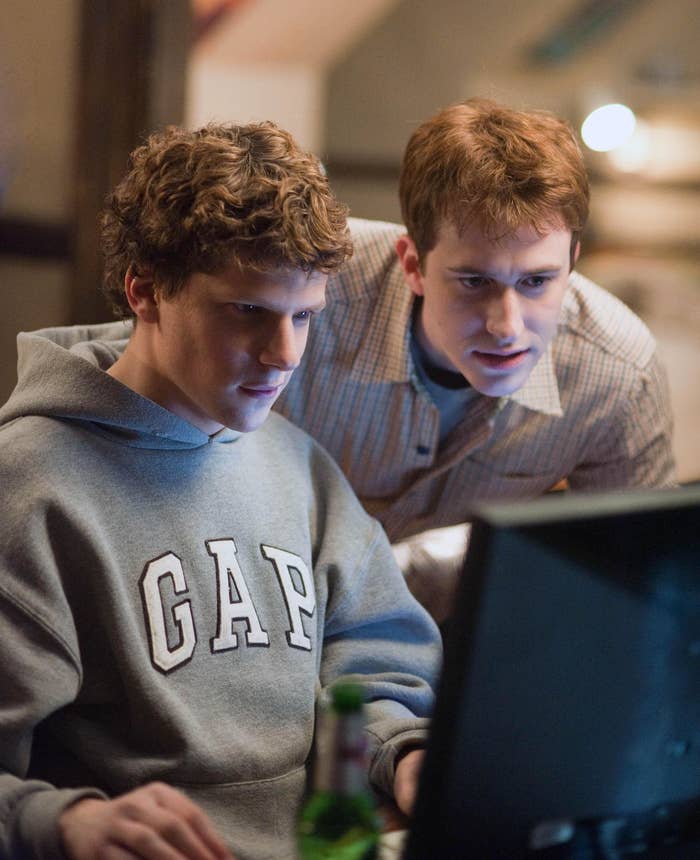
The Social Network (2010): The creation of Facemash
This eight-minute sequence begins around 8 p.m., when 19-year-old Mark Zuckerberg (Jesse Eisenberg) sits at his computer in his dorm, and it ends at 4 a.m., when Harvard’s head of IT is woken up by a phone call because the campus’s network is about to crash. It’s fall 2003, and Mark has just been dumped. He LiveJournals about his ex, her surname, and her bra size. He and his roommates decide to create a site comparing different Harvard students’ images. Mark pedantically narrates and LiveJournals — much of what he says is apparently verbatim from his real-life blog — about how he circumvents the various “face book” databases of seven different Harvard dorm houses to accumulate pictures of women undergrads.
Meanwhile, students in the prestigious final clubs are having a very different night, getting lit, making drinks, and playing strip poker. The two scenes are intercut with brilliant editing by director David Fincher and a pulsating electronic score by Atticus Ross and Trent Reznor of Nine Inch Nails.
At one point, Mark’s friend Eduardo (Andrew Garfield) writes the Elo rating system — an algorithm that would later be ranked into apps like Tinder — on the dorm window. The resulting site, dubbed Facemash, compares different women students side by side for visitors to pick which one they deem hotter. It goes live, goes viral on campus, and crashes the Harvard network.
Facemash was only a rudimentary reflection of the real-life tech empire that followed, and the film preceded the Cambridge Analytica scandal by eight years. But the social network has only ballooned in power and infamy since the movie came out in 2010 — so this visual allegory of Mark harvesting people’s data for a website only became more relevant as the decade progressed. But it also shows the emotional cost of his hobbying in a brief reaction shot when his ex, Erica Albright (Rooney Mara), is taunted by other students; the image of her eyes welling up with tears, seeing how careless and cruel Mark has been with her personal info, was just an eerie omen of things to come.
—Emerson Malone
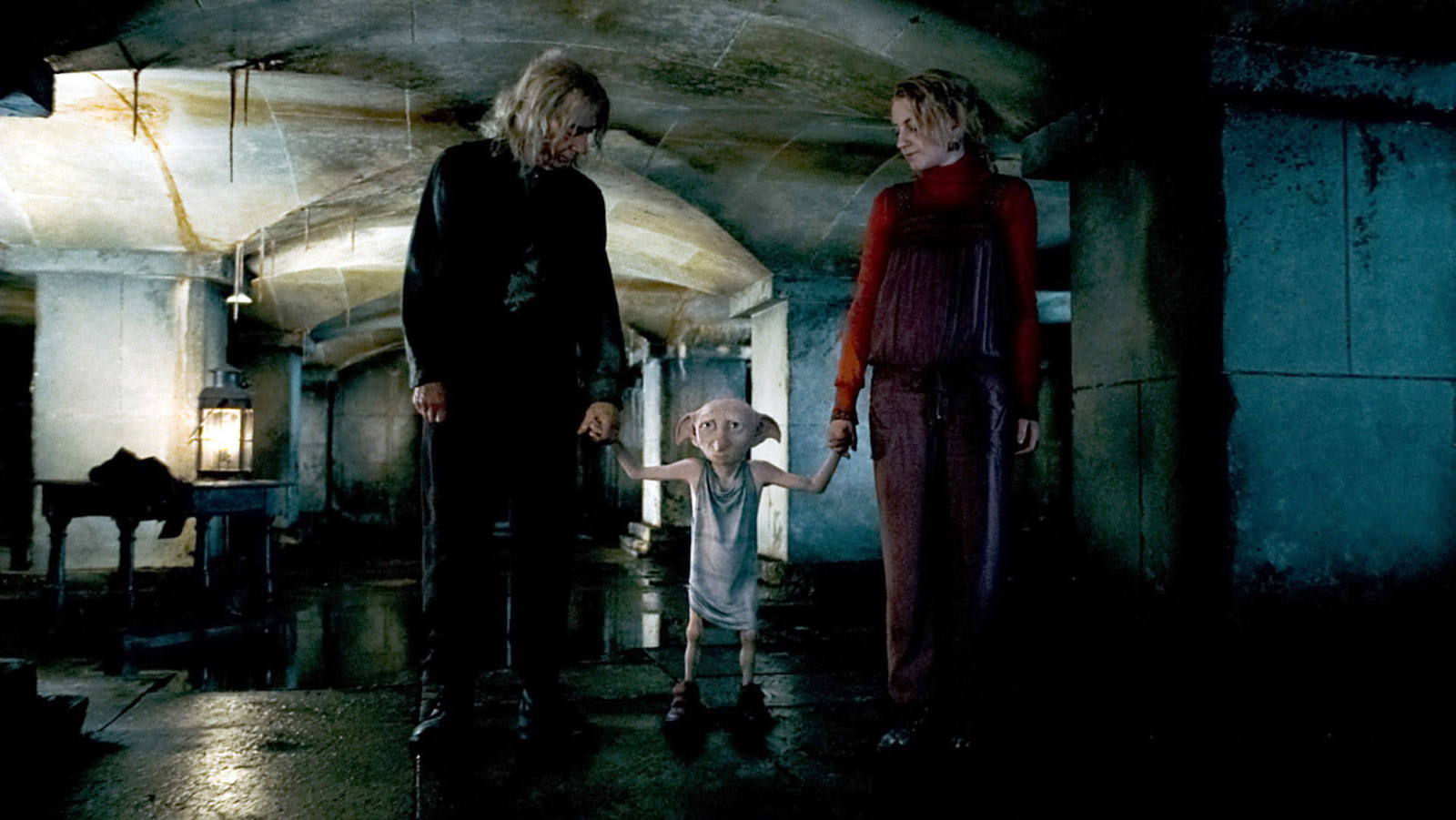
Harry Potter and the Deathly Hallows: Part 1 (2010): Dobby’s death
“Such a beautiful place…to be with friends. Dobby is happy to be with his friend…Harry Potter.” These are Dobby the house elf’s final words in Harry Potter and the Deathly Hallows: Part 1, and they will haunt me until my dying day.
He utters them as Harry (Daniel Radcliffe) cradles him on a gray, windy day on the beach after they’ve escaped Malfoy Manor, where Dobby (voiced by Toby Jones) delivered a brief but moving speech about being a free elf before whisking the kids and Griphook the goblin (Warwick Davis) away to safety — but not before being struck by a knife thrown by Bellatrix Lestrange (Helena Bonham Carter). Harry begs Hermione (Emma Watson) to help him, but it’s a lost cause. Dobby passes and Harry is joined by Luna (Evanna Lynch), who closes the elf’s eyes. He digs Dobby’s grave, sans magic, and life goes on.
I remember this scene by heart, but I just rewatched it to make sure I got all the details right, so I’m currently a blubbering mess. Most of the major deaths in the Harry Potter books and films make me weep, but Dobby’s is different. Watching Dobby die was like watching a beloved family pet die: It breaks something inside you, which in the long run makes you stronger and more capable of dealing with loss, but you never really get your childhood back.
Dobby, like Sirius Black and Albus Dumbledore and pretty much everyone else who died at the hands of Voldemort or one of his Death Eaters, wanted only to protect Harry, but there was an innocence to him that makes you want to curse J.K. Rowling for killing him off (which, yes, she apologized for last year, but I don’t care) and Harry Potter for not appreciating him enough.
—Jess Goodwin

Bridesmaids (2011): The diarrhea scene
If you haven’t seen this movie, it’s pretty unfortunate you’re about to read a few hundred words on a mass diarrhea scene. Bridesmaids follows BFFs Lillian (Maya Rudolph) and Annie (Kristen Wiig), whose relationship is challenged by Lillian’s engagement and her budding friendship with Helen Harris III (Rose Byrne), the snobby wife of her fiancé’s boss.
This scene is set in a swanky bridal boutique, where Annie, the maid of honor, brings the bridal party for a fitting after lunch at an Argentine restaurant. They look at dresses, and go back and forth about which one to select for the bridesmaids to wear; Helen insists on an $800 Fritz Bernaise gown, while Annie, who is broke, tries to ply the group with something cheaper. Meanwhile, Lillian tries on a wedding dress to get into the spirit.
As the ladies emerge from their fitting rooms, they are all suddenly sweaty and squirmy, except for Helen. Slowly, they realize they have food poisoning from the suspect Argentine meat, and rush to the toilet to expel their violent diarrhetic demons. Lillian tries to run to the bathroom across the street, but ends up shitting outside in her expensive French designer dress. Only Helen, who opted for a salad at lunch, remains untouched by disaster.
I stared open-mouthed through this scene the first time I saw it, equally disgusted and enthralled. To think, one of the most memorable parts of a movie that was considered groundbreaking for its time — women are funny??? — involved the wedding party cartoonishly shitting and vomiting everywhere. And as Wiig, who cowrote Bridesmaids, later said, they were strong-armed into including the scene to make the women act “like guys.” But it was dazzling to me, like witnessing a trainwreck and the train was full of poop.
To me, this diarrhea scene proved prophetic: Over the decade, Americans elected Trump, white nationalism returned with a bang, Amazon and Facebook conquered the world, the climate crisis kept accelerating, and Kanye West pivoted to God. For better or worse, the breakdown of civility and gross, humiliating chaos in this Bridesmaids scene foreshadowed the absolute shitshow that the 2010s turned out to be.
—Clarissa-Jan Lim
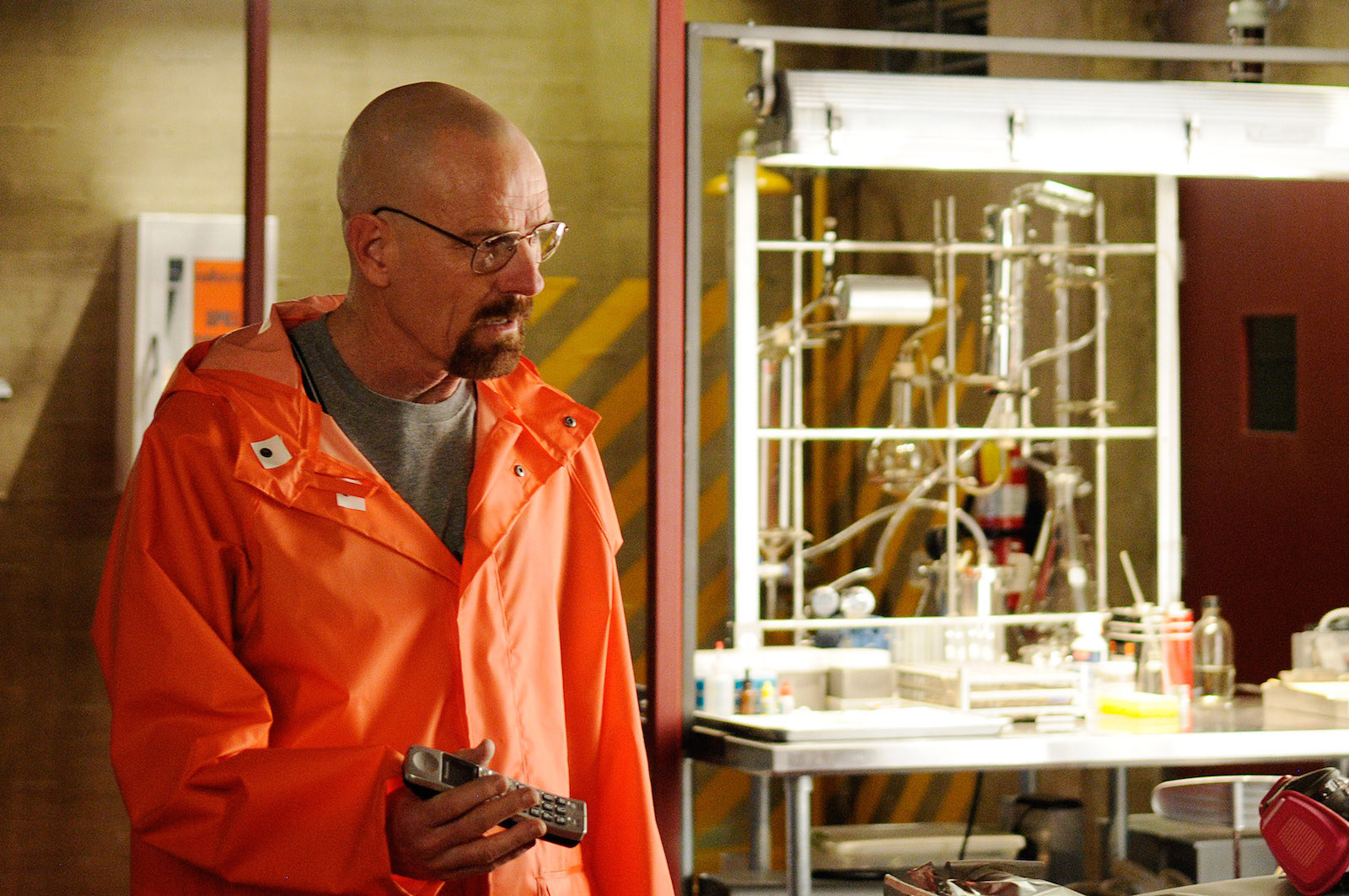
Breaking Bad, “Cornered” (2011): “I am the one who knocks”
There are a few key scenes in Breaking Bad’s five seasons where viewers see Walter White (Bryan Cranston) transform before their eyes from a schoolteacher with cancer and money problems to Heisenberg, the drug kingpin.
Of course there was Jane’s death in Season 2, but a scene even more central to Walt’s metamorphosis came in Season 4’s “Cornered,” in which Walt’s wife, Skyler (Anna Gunn), pleads with her husband to seek help from the police, telling him he is in danger and that he’s in over his head.
“Who are you talking to right now? Who is it you think you see?” he tells her, seething with fury. “You clearly don’t know who you’re talking to. So let me clue you in. I am not in danger, Skyler. I am the danger. A guy opens his door and gets shot and you think that of me? No. I am the one who knocks.”
One of the biggest challenges Breaking Bad faced was convincing viewers that Walt really had it in him to be pushed to the dark side of the drug underworld. This moment leaves the audience — and Skyler! — horrified as they realize who Walt has become.
Walt’s desperation from previous seasons has been overshadowed by Heisenberg’s ego, pride, and anger. He relishes the position he’s in, but the truth is, he has no way out. In a way, Skyler is right: her husband is in danger, and it’s in this aptly titled episode that we realize Walt is a prisoner of the world he’s created.
—Mary Ann Georgantopoulos
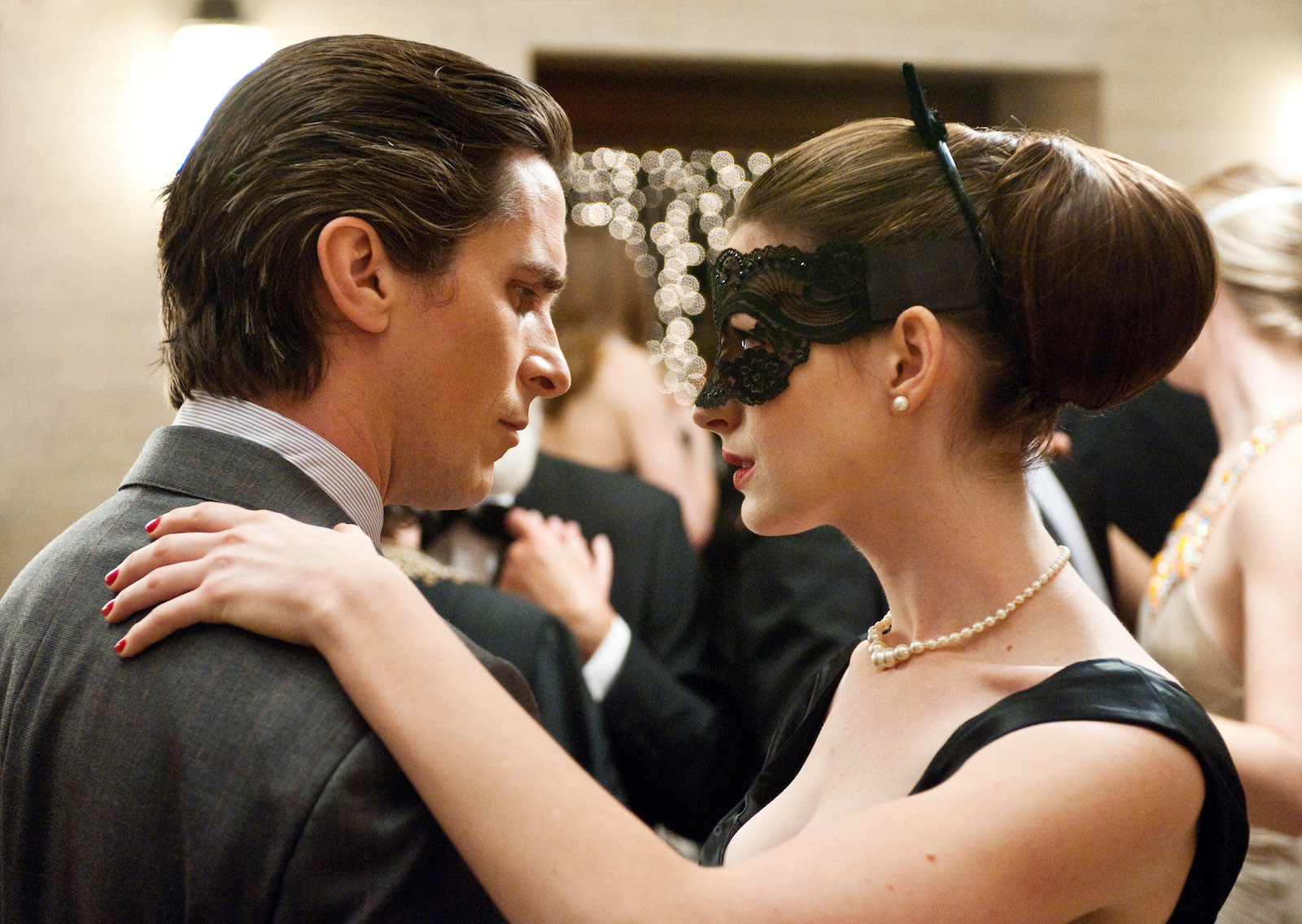
The Dark Knight Rises (2012): The masked ball scene
“Who are you pretending to be?”
“Bruce Wayne, eccentric billionaire!”
So opens the dialogue about wealth and power between Anne Hathaway’s Selina Kyle and Christian Bale’s Wayne as they dance in The Dark Knight Rises, one of the biggest entertainment events of the decade.
TDKR has a dark legacy as the background to the Aurora shooting, which preceded a decade of terrorism inside places like concert halls, churches, and holiday parties. But the politics of Christopher Nolan’s final Batman film — which was received at the time as reactionary (the final act opens with a tattered American flag) — look more prescient than anything now.
The movie came out the year following Occupy Wall Street, which had dominated the fall of 2011 but has slipped a bit as a seminal event of the 2010s. But as income inequality emerged as a decade-defining economic and political issue, Hathaway’s turn in the masked ball scene, twisting between fatigue and anger, sounds more contemporary than it did when the movie was released. “There's no fresh start in today's world,” she laments behind a mask. “Any 12-year-old with a cellphone could find out what you did. Everything we do is collated and quantified.”
As Bale and Hathaway continue dancing, she turns to lecturing, moving in closer and closer, and raising her voice. “You think all this can last? There's a storm coming, Mr. Wayne,” she whispers as a man in a tuxedo snaps a grotesque, warm king crab leg in a cutaway. “You and your friends better batten down the hatches, because when it hits you're all gonna wonder how you ever thought you could live so large and leave so little to the rest of us.”
—Katherine Miller

The Master (2012): The no-blinking interview
This scene in Paul Thomas Anderson’s The Master is pretty simple: The motionless camera only cuts sparingly in a dark room between the faces of the two central characters, Freddie Quell ( Joaquin Phoenix) and Lancaster Dodd (Philip Seymour Hoffman). The premise is simple as well: Dodd, the leader of a Scientology-like movement, is “processing” Quell, a WWII vet with alcoholism and PTSD, with a series of questions to be answered without blinking. The result is just very good.
There’s a strong element of personal bias in this selection; I’m a sucker for anything director and writer Paul Thomas Anderson has done in the last few decades, and I could easily write about whole chunks of The Phantom Thread here, too. But this scene sticks with me in part because of what it represents: two incredible actors peaking, one of whom would die soon after. The Master is one of my favorite roles Hoffman took on before his 2014 death: a cult leader with unclear motives, outside of advancing his own ego. His strength is all over this scene, even as it squarely focuses on Phoenix. The scene shows the power of leading questions, and how simple it can be to manipulate emotionally fragile people with questions disguised as a game. In that way, it shows how cults work. Hoffman projects as the steady questioner, unmoving as Phoenix’s character has a near breakdown trying not to blink, confessing to incest and murder, all in the name of trying to get the approval of someone he thinks may be the father figure he longs for.
—Matt Berman
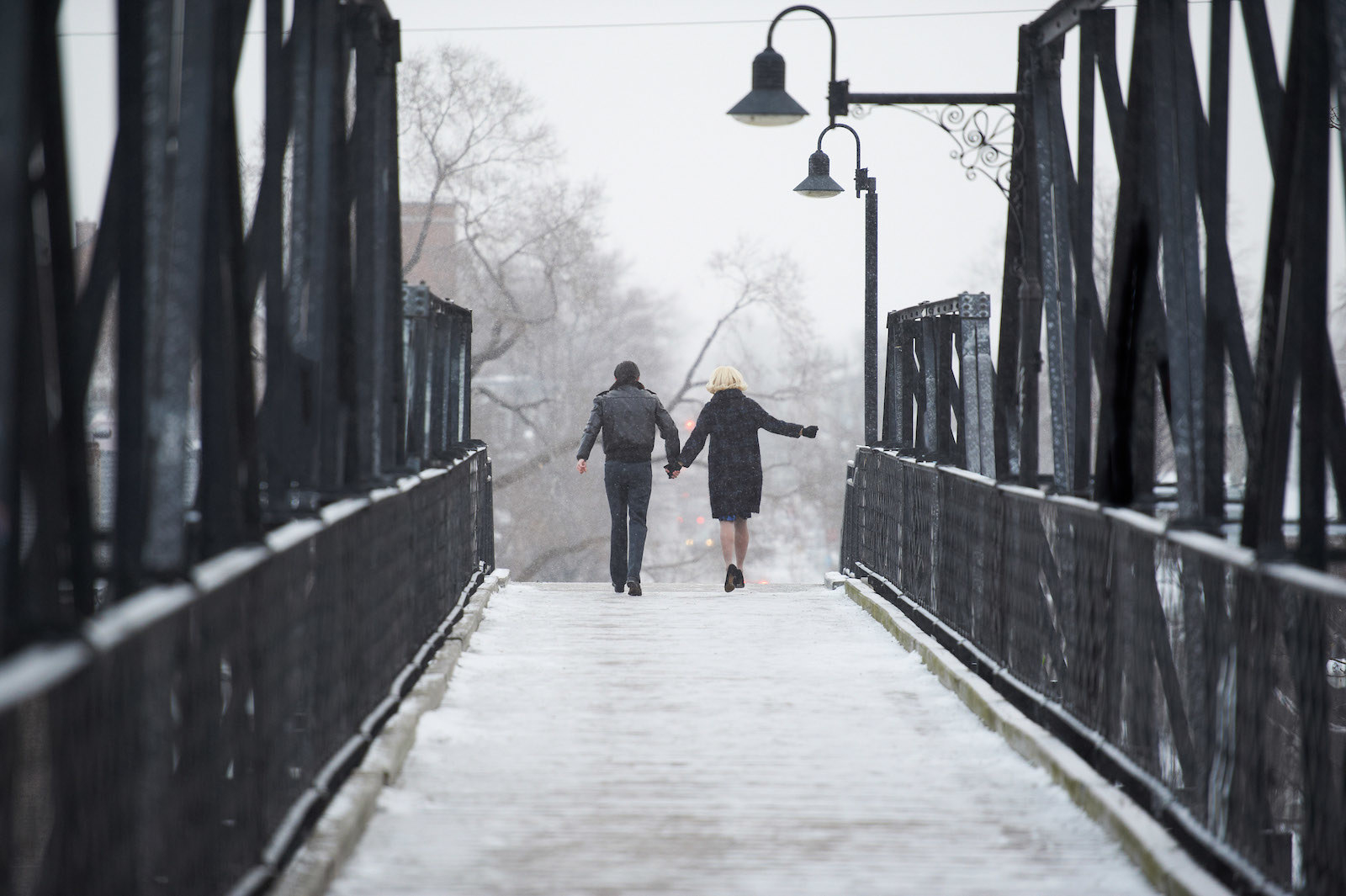
Stories We Tell (2012): The reveal
There’s a moment in the final third of Sarah Polley’s exquisite documentary about her family that completely threw me, forcing me to instantly reevaluate everything I’d just spent the last 90 minutes or so watching. It was challenging, but also immediately illuminating — comforting, even — because it was as if the movie had just revealed its secret to me in the most intimate of ways. I was on a date when I saw the film with a guy who was somewhat less moved by the whole experience. The movie has stayed with me. The boy has not.
Polley, one of the stars of The Sweet Hereafter (1997) and the teen movie Go (1999) who instead opted for an arthouse career directing films like Away From Her (2006) and Take This Waltz (2011), here interviews her siblings, her father, and her family’s friends about her late mother, Diane, a Canadian actor who died when Polley was a child. We see Diane in old footage, singing on a black-and-white TV show, as well as in seemingly endless reels of old home movie footage, laughing at parties and cavorting with her family on a beach. She is so tremendously alive. Gradually, though, the mystery of Diane becomes evident. Her marital unhappiness is palpable in the old Super 8 footage, and eventually Polley stumbles into her mother’s biggest secret: Polley’s biological father was not the man who raised her.
In their separate interviews, Diane’s family and friends offer competing accounts of her life — their own versions of the truth as they know it. It’s these stories that Polley is trying to weave together in order to construct something concrete.
But it’s only when the Super 8 camera zooms out and reveals (gasp!) Polley on a set with actors cast to look like her parents tasked with faking old home movie footage that the soul of the movie suddenly emerged for me. The past is always a construction. We experience nothing truly alone. There is no single truth. It’s all just stories we tell.
—David Mack
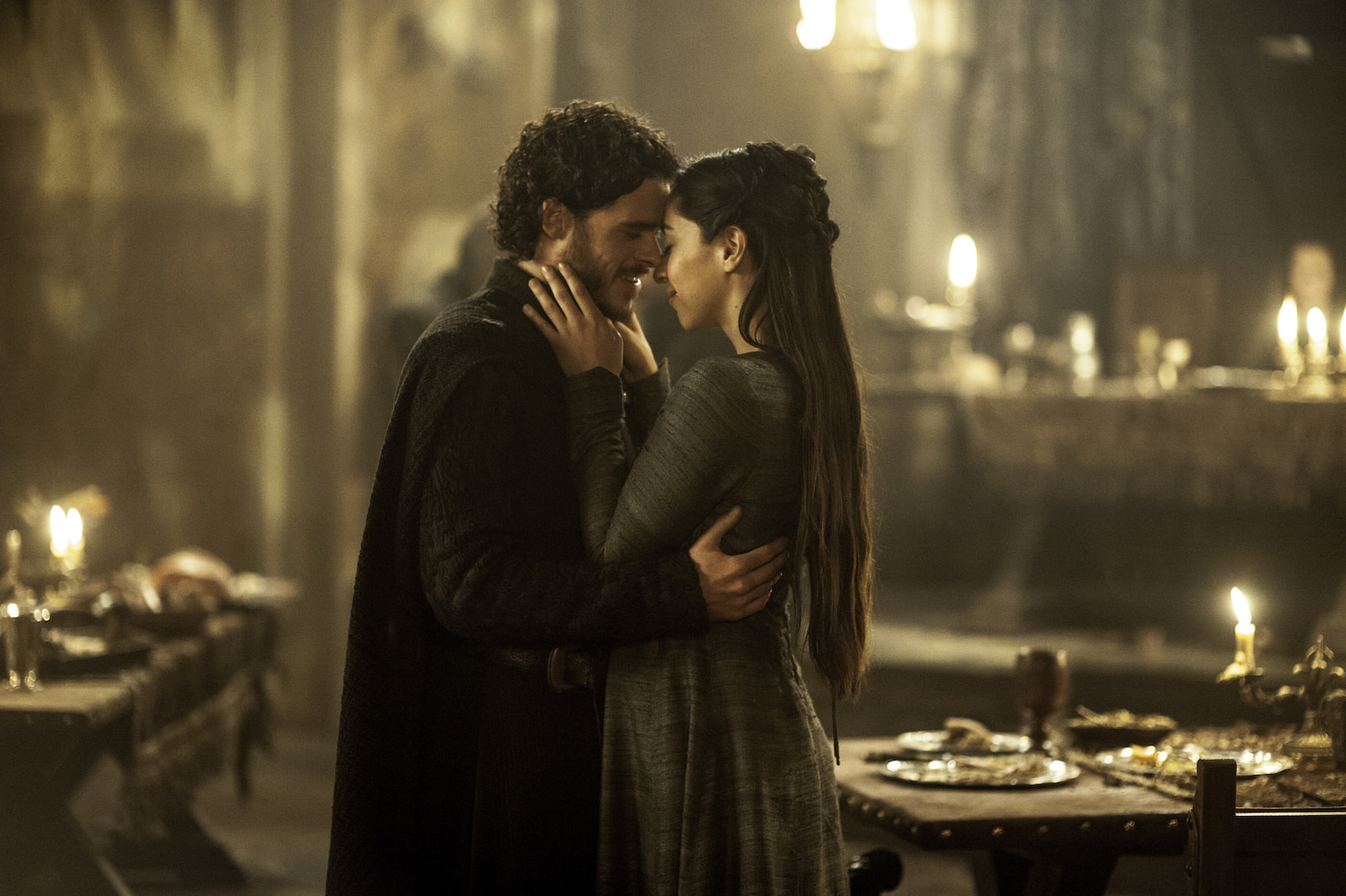
Game of Thrones, “The Rains of Castamere” (2013): The Red Wedding
Catelyn Stark (Michelle Fairley) is the only member of the Stark family who immediately recognizes the tune of “The Rains of Castamere.” The song dedicated to the rival Lannister family begins to play immediately after Lord Walder Frey (David Bradley) locks the doors in his great hall, where Catelyn’s brother, Edmure (Tobias Menzies), has just married one of Frey’s daughters. As the beautiful but eerie song plays, Catelynn realizes something we viewers could never have foreseen: a slaughter is imminent.
Game of Thrones fans had been primed for the deaths of main characters after the beheading of Ned Stark (Sean Bean) in Season 1. But nothing could prepare us for the brutality and speed with which the show dispatched several beloved characters at once. Within minutes, Catelynn, her son Robb (Richard Madden), and her pregnant daughter-in-law Talisa (Oona Chaplin) are all butchered in one of TV’s most shocking, gruesome, and horrifying scenes: the infamous Red Wedding.
While the series’s final season left many fans disappointed, Game of Thrones — and this scene, in particular — forever changed our expectation that heroes are somehow safe from war and chaos, somehow untouchable. As we were constantly reminded on the show, “All men must die.”
—Kayla Smalls
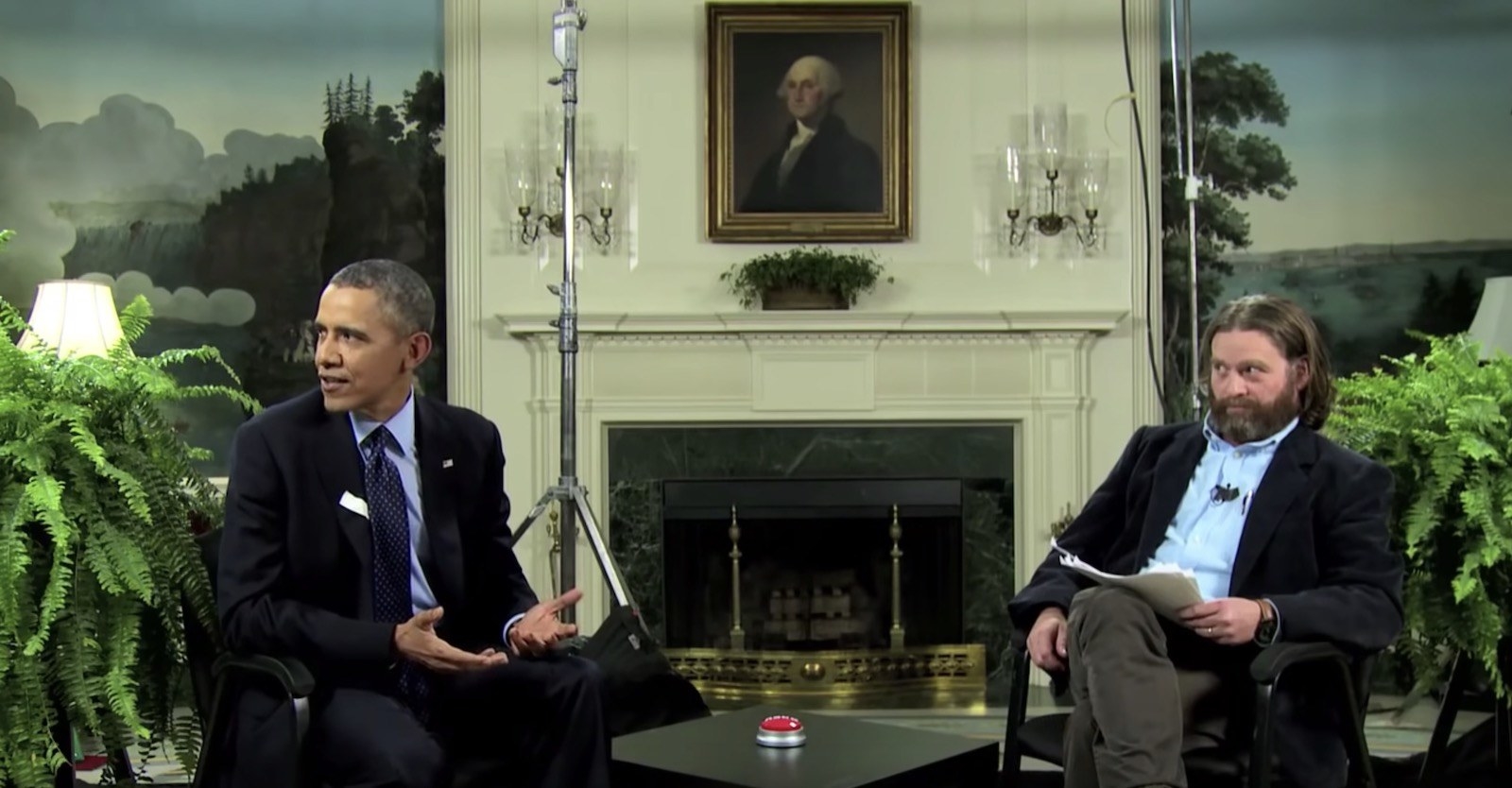
Between Two Ferns: President Barack Obama interview with Zach Galifianakis (2014)
The story behind how the president of the United States appeared on this Funny or Die web series is still surreal to think about, five years later. In 2014, the Obama administration was desperate to get more people to sign up for government-sponsored health care plans. At a brainstorm between senior Obama officials and assorted entertainment folks, comedian Scott Aukerman, co-creator of Between Two Ferns, suggested that Obama appear on the show. Amazingly, the president agreed — and even more amazingly, he’s very good!
Unlike so many stunty interviews with politicians, the episode still feels in keeping with the tone of the show, which is an often silly, frequently cringe-inducing send-up of local access TV interviews. Galifianakis, who plays an intentionally grouchy, trolly version of himself, isn’t afraid to go in: “Where are you planning on building your presidential library? In Hawaii or your home country of Kenya?” he asks Obama. (And I...oop.)
But the most memorable retort comes from Obama when Galifianakis asks him why he doesn’t run for a third term. “If I ran a third time, it’d sort of be like doing a third Hangover movie. Didn’t really work out very well, did it?” BURN.
—Tomi Obaro
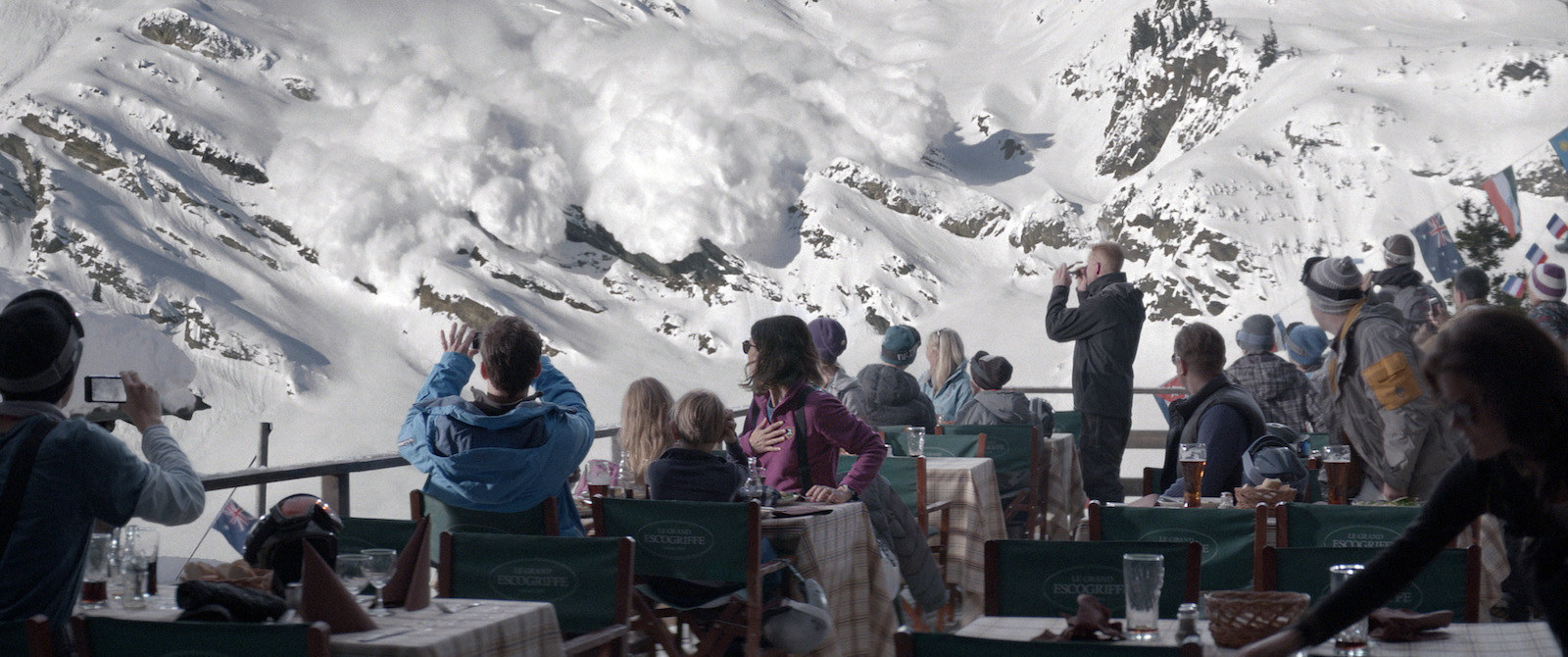
Force Majeure (2014): The controlled avalanche
The hills are alive with the sound of explosions. A controlled avalanche takes place while the whole family — Tomas (Johannes Kuhnke), Ebba (Lisa Loven Kongsli), and their two children — is at lunch. This three-minute scene transpires in one shot from a static position on the patio of this luxe ski resort in the French Alps, surrounded by blindingly white mountains. The family is on vacation, we learn, so that the overworked dad can focus on his wife and children for a change. After they get their food, there’s a boom in the distance. A beautiful controlled avalanche forms in the mountaintops, and it’s barrelling toward them. “It’s controlled. … They know what they’re doing,” Tomas reassures his family as others take out their phones to record it. It becomes clear the oncoming snowslide is headed right for them, so Tomas grabs his gloves and iPhone, says nothing, and straight-up peaces out, running away from the impending disaster and his family. The avalanche hits and envelopes the scene. Then: silence.
Everything is covered in a white haze. As it clears, we see a white dust now coats every surface. The wife and children, traumatized, reorient themselves. Tomas returns and chuckles it off. This event becomes a flashpoint for the rest of the movie. Later, Tomas tries to gaslight his wife by denying his cowardice and running away. He treats the event as a Rorschach blot, telling Ebba, “I don’t share that interpretation of events. You are entitled to your own point of view, but I don’t share it.” His abandonment becomes a prism through which other characters speculate about our biological defense mechanisms, and what arbitrary social obligations have been programmed into our 21st-century human lives. The snowstorm was ultimately harmless, but it still set off a brutal evisceration of Tomas’s stoic patriarchy.
—E.M.
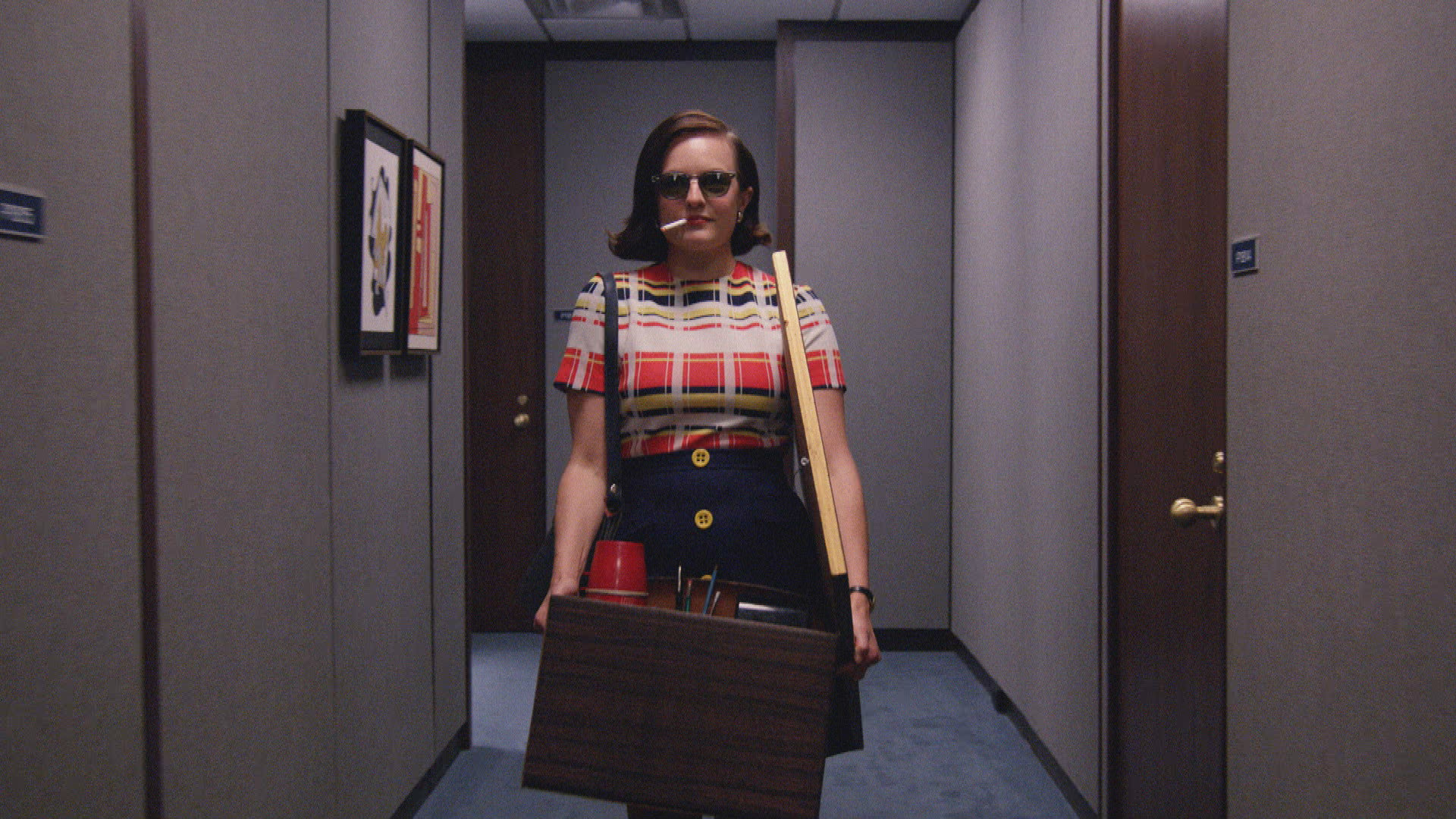
Mad Men, “Lost Horizon” (2015): Peggy arrives at McCann Erickson
Peggy Olson (Elisabeth Moss) arriving to her new job at McCann Erickson, wearing sunglasses inside, a cigarette hanging out of her mouth, and carrying an illustration of an octopus sexually pleasuring a woman has become one of the most GIF’d moments of the 2010s.
“Lost Horizon” was the third-to-last episode in Mad Men and illustrated just how much Peggy had grown during its course. She started as a timid, somewhat naive secretary, and ended up as that cool, confident woman strutting into a boys club of an office like she owned the place.
Peggy didn’t want to work for a big agency like McCann, but ultimately she knew she’d have to if she wanted to have a career like her mentor, Don Draper (Jon Hamm). That meant she’d have to put up with the kind of blatant misogyny and sexual harassment that had just forced Joan (Christina Hendricks) out of the industry altogether. But Peggy’s dramatic entrance after days of being snubbed by her new employers — who assumed she was a secretary because of her gender and therefore hadn’t assigned her an office — showed that she was going to deal with that on her own terms.
Mad Men’s depiction of the rampant sexism of the 1960s highlighted both how much and how little things have changed in the 2010s. Being a woman in the world can often feel disheartening and hopeless. Peggy’s iconic stroll perfectly encapsulates the feeling that follows the despair and anger: having no fucks left to give.
—Julia Moser

The Americans, "Open House" (2015): Philip pulls Elizabeth's tooth
Yeah, the geopolitical and historical stuff was cool, but the thing that made The Americans so excellent was the story of Elizabeth and Philip Jennings’ marriage, which was incredibly unique (a fake relationship arranged by the KGB of incredibly attractive Russians spies pretending to be American travel agents) but somehow also strangely honest and real.
The intricacies of that relationship are on display beautifully in this unusual scene. Elizabeth (Keri Russell) has an infected tooth from a run-in with the FBI’s Agent Frank Gaad (Richard Thomas), but she can’t go to a dentist without blowing her cover. So it’s up to Philip (Matthew Rhys) to pick up the pliers in the basement of their house and do some DIY dentistry.
Philip does what he has to, reluctantly hurting Elizabeth for the greater good, but it pains him too. Elizabeth endures it, like she endures everything. When his first attempt only removes part of the tooth, he goes in again, Elizabeth readying herself by clutching on to his chest. After three long minutes, he finally pulls the thing out.
The scene plays without dialogue, just stomach-churning sound design layered over Elizabeth’s whimpering and panting, but it says so much about their marriage. They’re physically close, bound together, isolated from everyone else, vulnerable, and entirely dependent on each other.
It’s impossible to watch it all unfold without clenching every muscle: Elizabeth’s jaw is forced wide open to accommodate all the brutal metal; there’s blood dripping from her mouth and tears welling as she looks to Philip. It’s a feat of direction, and Rhys and Russell convey so much with their eyes. There’s more raw intimacy here than in any sex scene, and it’s more visceral, too. Welcome to the world of Mr. and Mrs. Jennings.
—Hannah Ryan
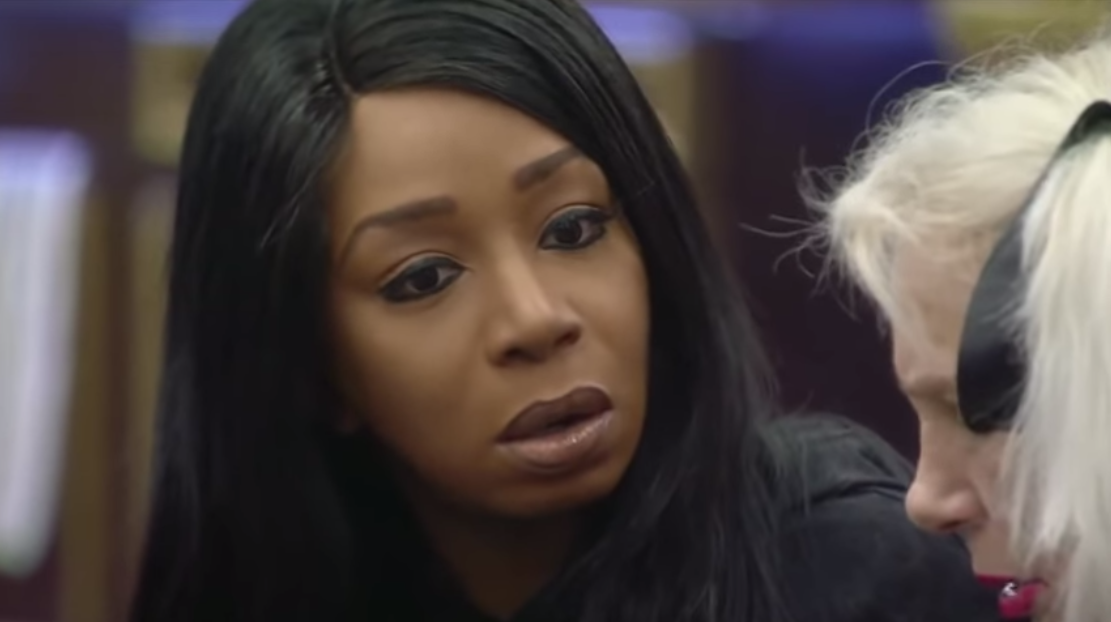
Celebrity Big Brother UK (2016): "David’s dead"
After Tiffany “New York” Pollard gifted the internet countless reaction images from her stints on various 2000s reality TV shows, it was hard to imagine she’d strike gold again, but the Meme Queen™️ did just that in 2016, delivering one of the most memorable TV moments of the decade.
Pollard probably wasn’t seen as big competition when she joined the cast of Celebrity Big Brother UK, but she had a priceless reaction to being told by fellow housemate Angie Bowie, the ex-wife of singer David Bowie, that he had just died. In Pollard’s defense, Angie only said, “David’s dead,” which caused the reality TV star to freak out, as David Gest was starring on their season as well. Because Angie didn’t specify which David had died, Pollard assumed she meant Gest, who had apparently been sleeping a lot during filming for the show.
The riveting seven-minute clip of the misunderstanding to end all misunderstandings is full of suspense, which soon devolves into complete chaos.
The moment is both funny and heartbreaking — funny because Pollard’s reaction is incredibly extra, and a little sad because Angie, who just received news of her ex-husband’s death, is consoling someone even though she’s the bereaved one.
In a decade of WTF moments, it’s quite fitting that Pollard blessed audiences with another outrageous gem in her already overflowing bag of priceless reality TV moments.
—Michael Blackmon
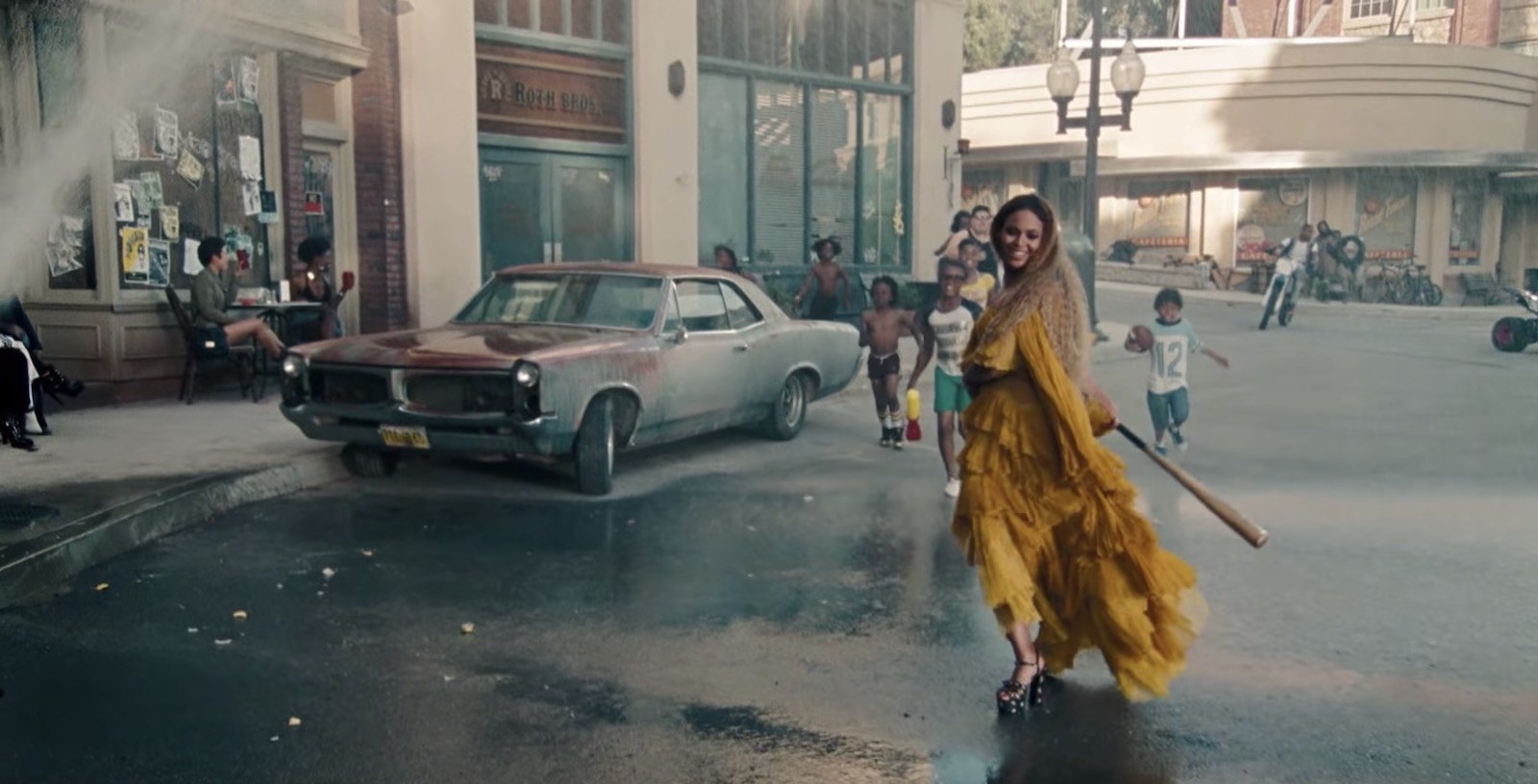
“Hold Up” music video (2016): Beyoncé smashes cars
To be clear, all of Lemonade is a triumph, must-see TV, etc. But there’s something indelible about watching Beyoncé, normally so controlled and poised, going ham on some cars with a baseball bat, while reinventing the color yellow in that gorgeous Roberto Cavalli dress.
—T.O.
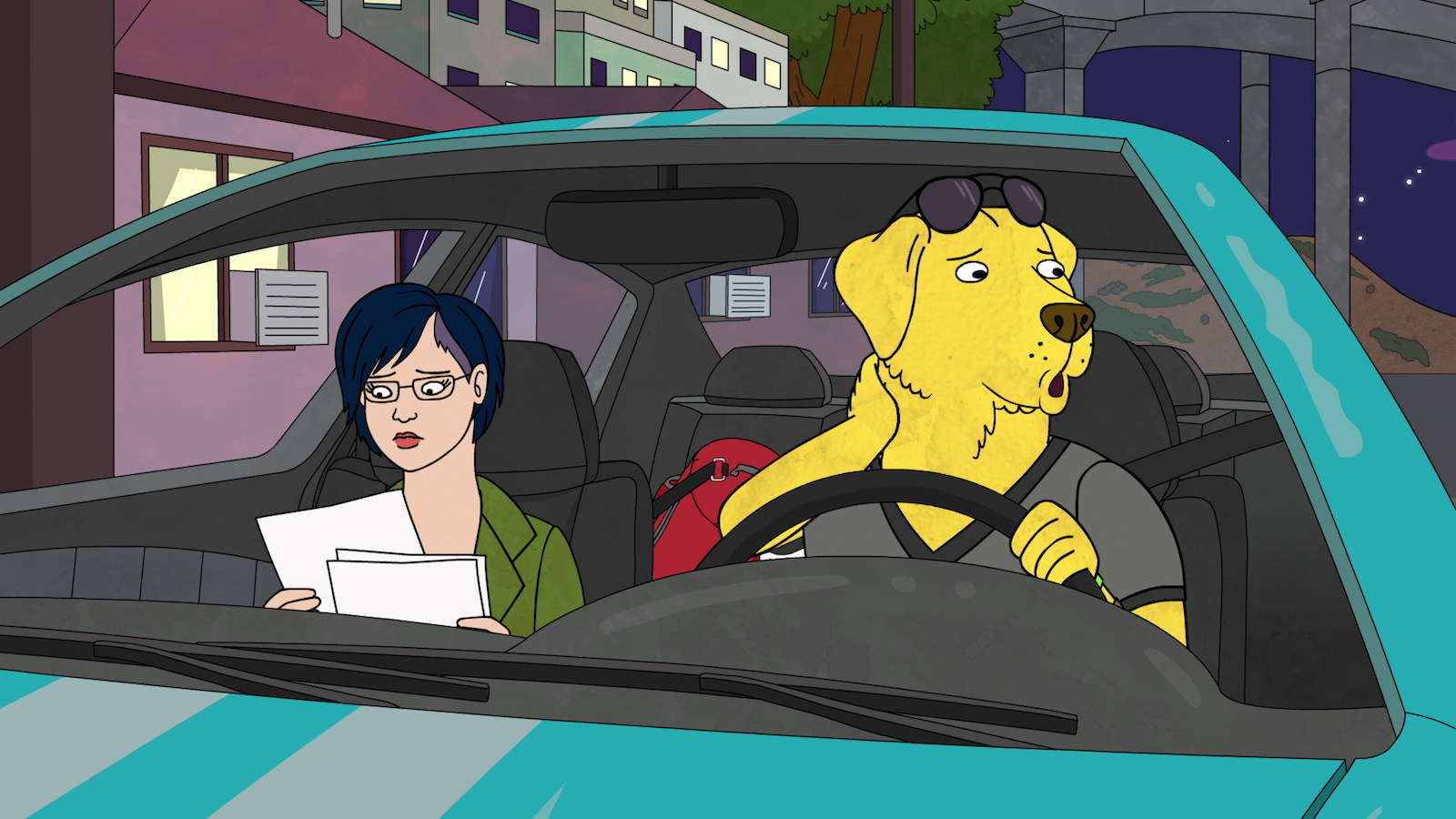
Bojack Horseman, "What Time Is It Right Now" (2017): Diane and Mr. Peanutbutter discuss marriage
There are a million scenes from BoJack Horseman that are more important and probably more memorable for most, but the one I think about constantly is a short scene in the Season 4 finale. It's one that anyone who has struggled to hold onto a relationship that they know is probably over can relate to.
In the episode, Diane Nguyen (Alison Brie) and her husband, TV actor Mr. Peanutbutter (Paul F. Tompkins), are looking to buy a new house together — one that belongs to them, Mr. Peanutbutter emphasizes. All episode they talk about how excited they are to move into it together and finally start their “normal” lives there, after seasons of dealing with the tension between his intense optimism and her depression. But they can’t bring themselves to enter the house, instead taking a last-second trip to Hawaii.
When they finally go inside, Mr. Peanutbutter tries to surprise Diane with a Beauty in the Beast–style library he’s had built for her, one she'd wanted since she was a kid. But it starts a fight. Diane is upset that, once again, he did something really well-intentioned that she didn't want him to do for her. Mr. Peanutbutter can't understand why she’s mad.
Diane struggles to explain and then she compares their marriage to a magic eye poster (something he loves). "It's messy. and at first glance, it doesn't seem to make any sense. And it's hard to figure out,” she says. “But sometimes, if you squint at it just right, everything lines up, and it's the most perfect, beautiful, amazing thing.” He agrees and gets excited at that sign of reconciliation, but then she pauses. Diane, finally, acknowledges to herself and out loud to her husband: "But I’m so tired of squinting” and breaks down sobbing.
This scene came at a very particular moment in my life and it just totally destroyed me. As much as BoJack can be very funny, it can also deliver these really devastating and true moments that rival any drama on TV right now.
—Sarah Mimms
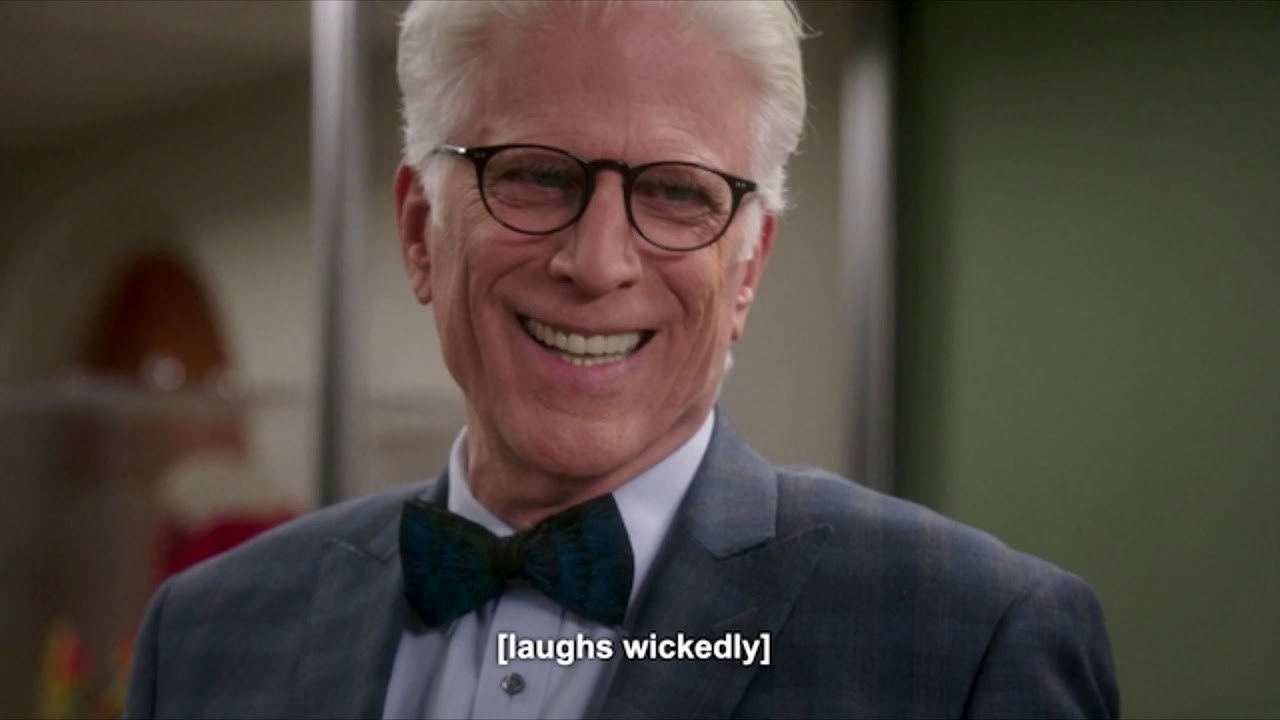
The Good Place, “Michael’s Gambit” (2017): The twist is revealed
By the end of the first season of The Good Place, Arizona dirtbag and accidental entrant into heaven Eleanor Shellstrop (Kristen Bell) was becoming a better person. Over 13 episodes, we’d watched her study ethics and learn to love others. Maybe she truly did belong in the Good Place, which would mean an eternity of happiness: margaritas summoned on command, the answers to all the questions of the universe, the ability to fly. Or as the series had shown us, simply endless days of strolling around a bright and cheerful neighborhood while eating frozen yogurt.
But in Episode 13, “Michael’s Gambit,” Eleanor and friends Chidi (William Jackson Harper), Tahani (Jameela Jamil), and Jason (Manny Jacinto) are faced with an impossible decision: Two can stay in the Good Place while two must be sent to the Bad Place. As they argue, Eleanor shouts a startling revelation: This is the Bad Place.
The conflict and uncertainty that had propelled the series was in fact evidence our heroes were being tortured all along. The characters — just like us viewers — had been lulled by the candy-color palette and pleasant soundtrack of their surroundings.
It was a fundamental shock — particularly coming from creator Michael Schur, whose work on The Office and Parks and Recreation had us expecting zany antics with a side of heartfelt moments, not a plot twist that changes everything.
And it hit us just as everything was changing. The episode aired Jan. 19, 2017, the day before Donald Trump was inaugurated as president of the United States. If “This is fine” was the slogan for a head-spinning 2016 campaign season, “This is the Bad Place” would take us into the following years. Check the headlines just about any day — someone must be torturing us, right?
—Claudia Koerner

Twin Peaks: The Return, Episode 8 (2017): The entire fucking episode
No one was prepared for this audiovisual mindfuckery. It’s impossible to pluck a single “scene” from this genre-subverting hour of television, as each element in the episode — considered by co-creators David Lynch and Mark Frost to be Twin Peaks’ origin story — is a thread in a phantasmagoric tapestry.
The eighth installment (its post-airdate title is “Got a Light?”) of the Twin Peaks revival makes a shocking detour — geographically, tonally, and thematically — from the series’ endearing oddballs and black-as-midnight-on-a-moonless-night dark comedy.
That whimsy was absent in Episode 8, a chiaroscuro nightmare that is so unnerving, mesmerizing, and jaw-dropping that you might not remember to close your mouth until the end.
Its first few scenes are weird enough: flickering, black-and-white apparitions of grizzled “woodsmen” revive Dale Cooper’s evil doppelgänger (Kyle MacLachlan) after he is shot — and Nine Inch Nails (!!!) perform at Twin Peaks’ Roadhouse.
The next scene begins with a title card reading July 16, 1945, in White Sands, New Mexico, and the first detonation of the atomic bomb. The 10-minute (!) shot — scored by a cacophony of screeching violins, then silence, then Lynch’s signature static — starts miles away from the explosion, zooming closer and closer to ultimately examine its minute, terrifying particles and the birthing of both evil (Killer BOB and the woodsmen) and innocence (the golden essence of Laura Palmer).
Ten years later, after an unnerving black-and-white interlude inside a fantastical movie theater, we meet a grizzled woodsman with a cigarette accosting strangers. “Got a light,” he says (it’s not a question) amid distorted sound and static and bright flashes. In another assault of sound and light, he commandeers a radio station and, reminiscent of a bad poetry slam, rasps these lines over the airwaves:
“This is the water, and this is the well / Drink full, and descend / The horse is the white of the eyes, and dark within.”
Finally, a grotesque frog creature crawls into a young girl’s mouth, and we remember to close our own.
—Drusilla Moorhouse
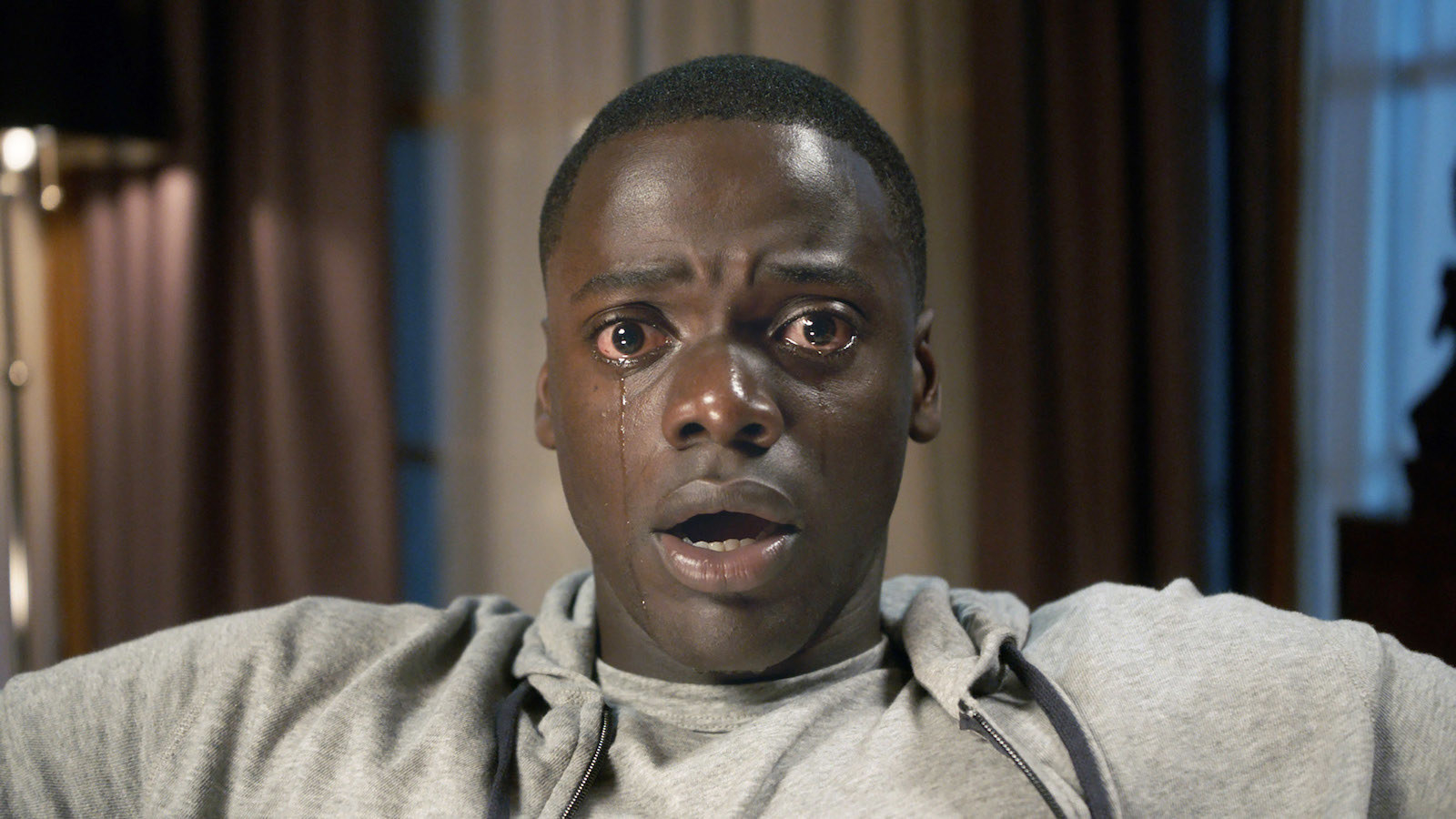
Get Out (2017): The Sunken Place
“Sink into the floor,” says Missy (Catherine Keener) as she stirs a teacup, the click-clacking of her spoon hypnotizing Chris (Daniel Kaluuya). He falls backward into a dark, wall-less space where he floats, watching the world through a tiny opening, unable to be heard, to act, to influence anything that goes on outside of this abyss.
“Now you’re in the Sunken Place,” she says.
All that Chris wanted was to meet his white girlfriend’s family. But it just so happened that her family is in the business of lobotomizing and selling black people to elderly white folks (and one old Asian man) so they can have their consciousness transferred into their newly purchased humans — a fucked-up modern-day version of slavery in which black bodies aren’t just something to be owned but to be inhabited. The Sunken Place is where Chris’s consciousness is placed for a white person to take over his body.
“The Sunken Place means we're marginalized. No matter how hard we scream, the system silences us,” said Jordan Peele about this scene from his debut feature film, Get Out.
The scene brought a visual vocabulary to the oppression that black people felt in the face of white supremacy and served as a commentary on race, slavery, and cultural appropriation through the lens of Chris’s character. The film also came out roughly a month after Donald Trump’s inauguration — gosh, remember that? — and has since become a much-used metaphor to describe “black people choosing an ideology that is racist against black people,” most notably MAGA-hat-sporting Kanye West and Trump administration official Ben Carson, Peele told Rolling Stone.
—Lam Vo
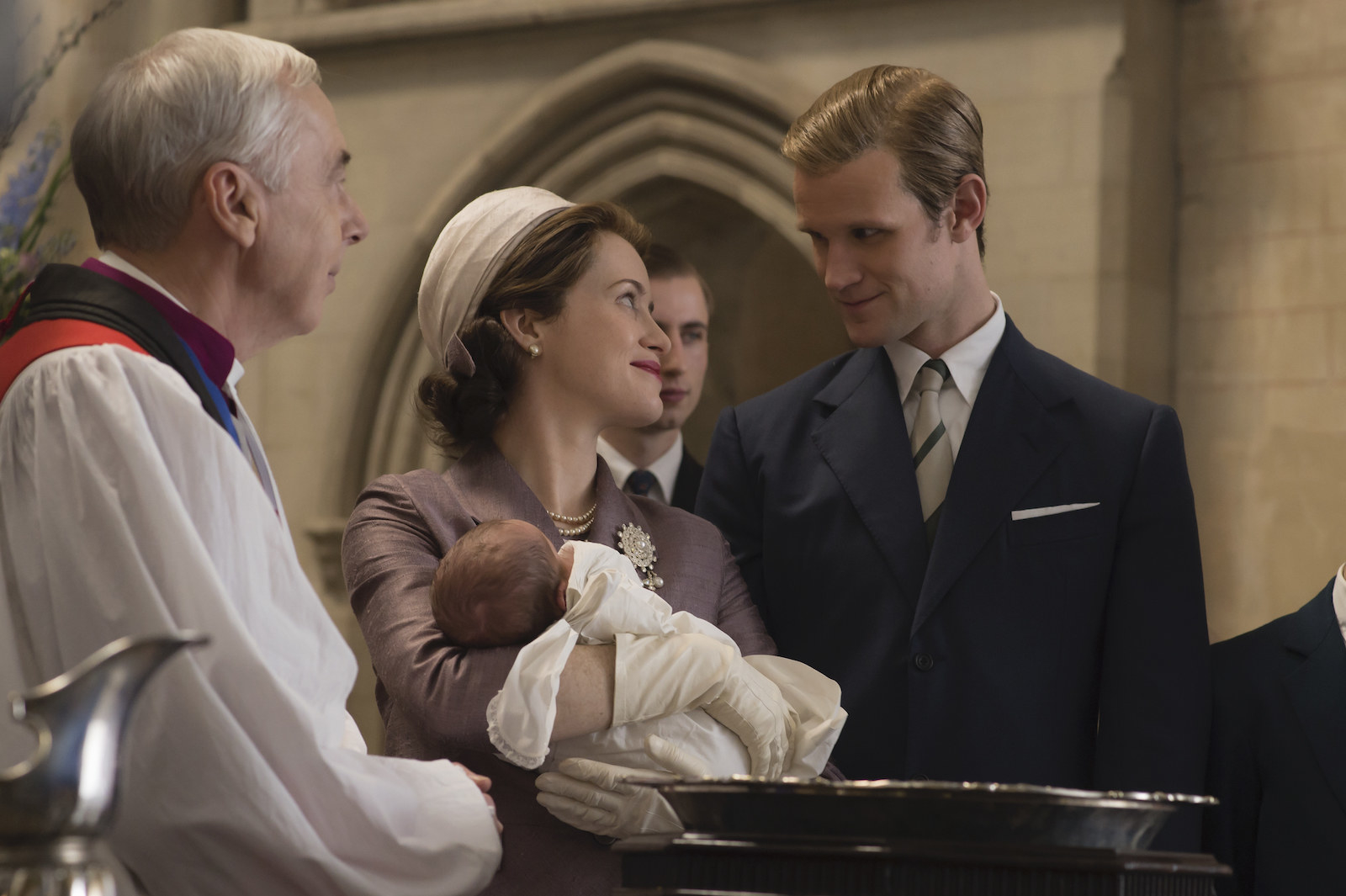
The Crown, “Mystery Man” (2017): The final confrontation
When Netflix first unveiled its regal and political drama in 2016, much was made of the show being among the most expensive series ever made. With lavish palace sets, countless background actors, and resplendent period costumes (the wedding gown Claire Foy wore in the series premiere was a meticulous re-creation of Queen Elizabeth’s original and reportedly cost roughly $35,000), every shot of The Crown practically oozes money — fitting for a decade dominated by premium, prestige television. But it’s one of the series’ quieter, more intimate scenes which I’ve found myself returning to maybe half a dozen times since I first saw it.
The 10-minute scene at the very end of the second season features two young actors at the top of their game: Foy as Elizabeth and Matt Smith as her wandering husband, Prince Philip. All season long the pair had drifted apart, torn asunder by mistrust and misdeeds, as well as the things that get left unsaid in any marriage — let alone that of the Queen of England. But here, in a quiet room in a castle in the Scottish highlands, the pair finally have at it.
Watch as the power dynamics shift between the two characters like a pro tennis match, as Elizabeth serves up long pent-up accusations while Philip, nervously but expertly, bats them away. Finally, she lands a devastating blow by revealing a ballerina’s locket Philip had held onto, an unspoken symbol of his infidelity. Smith’s face is silent, crestfallen, as he stares at the piece; Foy’s sad, determined eyes stare only at him. She knows she’s won, but she’s also lost, too.
I held my breath for the remainder of the unexpectedly tender, moving, and, yes, romantic scene as two of the stiffest upper lips in Britain finally found each other.
—David Mack
2017 Academy Awards: The Best Picture mishap (2017)
One of the most memorably confusing and shocking pieces of television this decade was an unscripted moment of chaos about movies: the Best Picture clusterfuck at the 2017 Oscars.
After enduring a lengthy ceremony, viewers at home watched the musical La La Land get announced as the winner of the top Academy Award over Moonlight, the coming-of-age story about a young gay black man. As a producer of La La Land gave his thank-you speech, his tone suddenly changed and he finished with “We lost, by the way.” Another producer then came to the microphone to say this was not some weird joke, and that Moonlight had in fact won. Presenter Warren Beatty tried to explain to the confused crowd of stars that he had been given the wrong envelope. The astonished and bewildered team behind Moonlight slowly took to the stage, their jaws on the floor. “I think you guys should keep it anyway,” host Jimmy Kimmel joked to the producers of La La Land.
But there was nothing funny for those who understood the significance of this win for the black and black queer community. The majority white cast and crew of La La Land were forced to physically move offstage to clear the way for the majority black and brown cast and crew of Moonlight — a shocking and rare creation of space for people of color which is something that is not often seen.
—K.S.
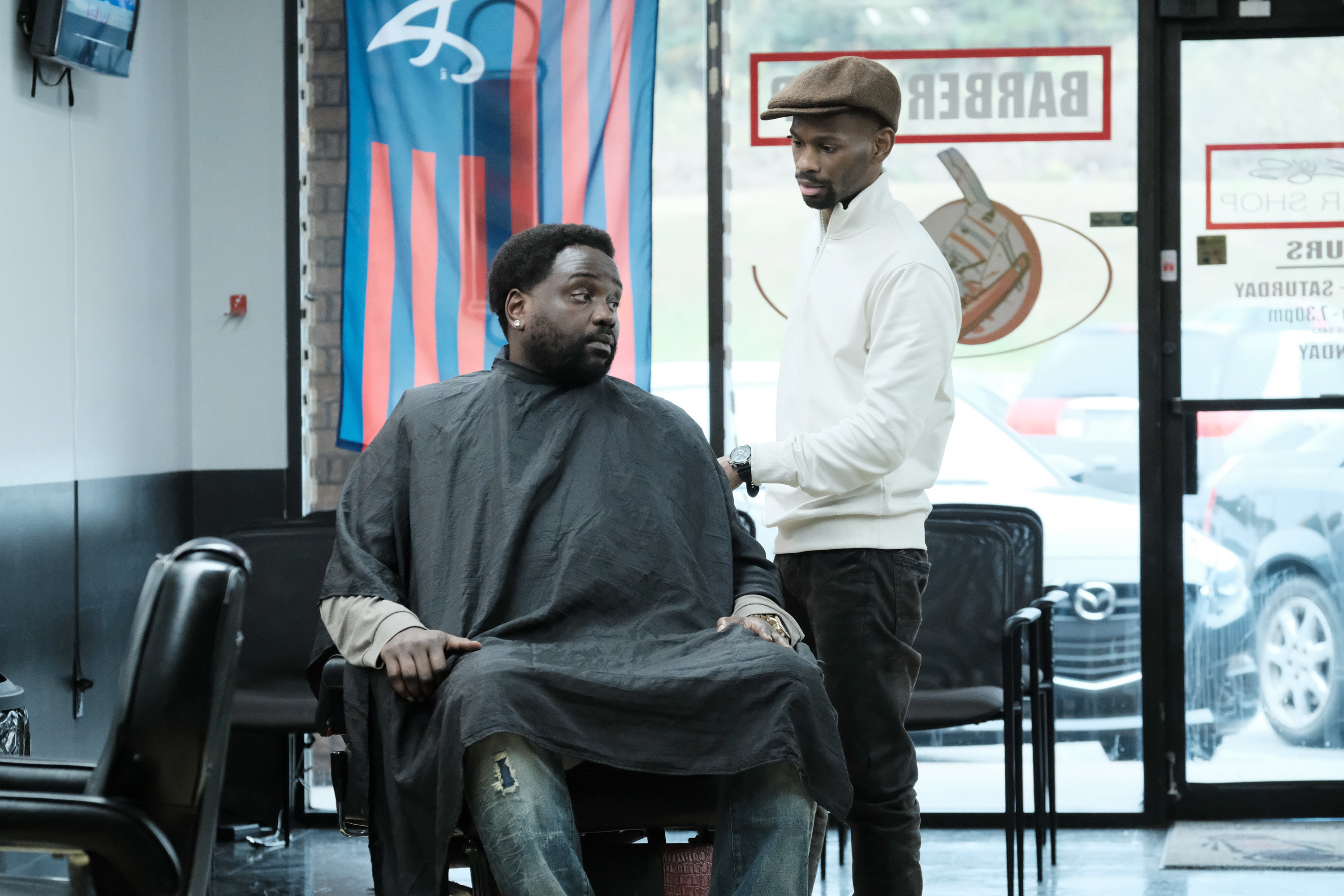
Atlanta, “Barbershop” (2018): The ending
Atlanta continues to raise the bar in terms of what a black-led TV show can be. Amid all its golden episodes, “Barbershop” is a standout. Donald Glover, who directed it, is a genius. Writer Stefani Robinson is a goddamn poet. And Brian Tyree Henry is one of the finest actors of his generation. Together, they gently and lovingly summed up the sacred rituals and intense relationships black people have not only with our hair but also with those we trust and invite to care for it.
In “Barbershop,” up-and-coming rapper Paper Boi (Henry) goes into the salon for a haircut from his regular barber, a shady fellow called Bibby (Robert Powell), the morning before a major photo shoot. He leaves — after dark — having been taken on a series of hijinx all over the city, including a hilarious scene in which Bibby cuts his son’s hair while Paper Boi is forced to watch, culminating in a hit-and-run incident that could have ended Paper Boi’s fledgling career. While viewers howl at Bibby’s shameless front, a simmering but ridiculously stoic Paper Boi finally gets his fresh trim. We learn that Bibby, for all his flaws, gives one hell of a shape-up.
The kicker comes when Paper Boi returns to the barbershop and instead of stopping at Bibby’s station coldly blanks him and walks to another man’s chair — the barbershop equivalent of crossing the picket line. Paper Boi has finally had enough of Bibby abusing his kind nature and has moved on. Bibby is crushed. But when the horror slowly spreads across Paper Boi’s face as he asks for “the usual” and realizes his new barber doesn’t yet know what that is, you feel the depth of his loss. Stealing a quick, sad glance at Bibby via the mirror, Paper Boi silently grieves.
—Elizabeth Pears
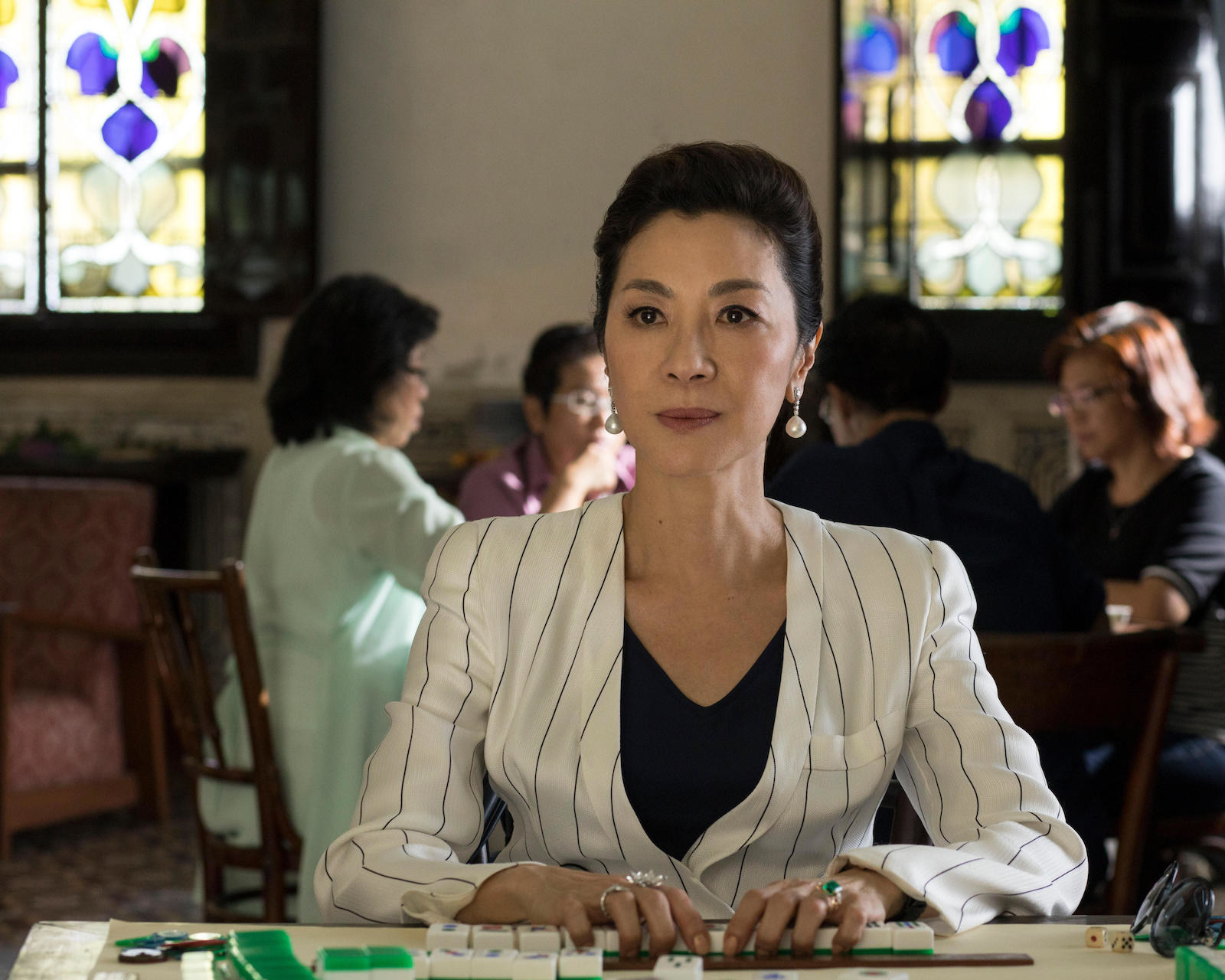
Crazy Rich Asians (2018): The mahjong scene
A young ingenue facing a stonehearted, disapproving mother-in-law — it’s a trope that’s been explored in so many romantic comedies. But the makers of Crazy Rich Asians took this age-old standoff and somehow transformed it into a “profound,” “meaningful and rare” experience, especially for Asian American viewers.
Here’s how the scene goes: Rachel Chu (Constance Wu) meets her boyfriend’s mother, Eleanor Young (Michelle Yeoh), for a game of mahjong, shortly after he proposed to her and told her he’d be willing to choose her over his family. To the soundtrack of rattling mahjong tiles, Rachel reveals that she has turned down Nick’s proposal because she’d never want him to lose his family. She does so while handing Eleanor the tile she needed to win the game, losing on purpose.
“I just wanted you to know that one day when he marries another lucky girl who is enough for you and you play with your grandkids … that it was because of me, a poor, raised-by-a-single-mother, low-class immigrant nobody,” Rachel says to Eleanor. Oof. What a power move.
What made Crazy Rich Asians so special was that it was the first movie in what felt like forever that afforded Asians a love story outside of the white gaze — there weren’t any geishas that needed white men to rescue them, no Asian exchange students to creep on desirable teenage girls. In many ways, this film was heralded because it was made for Asian audiences. The mahjong scene represents the culmination of this idea: Not only was Rachel’s “I’m not Asian enough” conundrum an issue that many generations of immigrants grapple with, but there were also intricacies to the choreography of the moves that only insiders to the game and the culture surrounding it could understand.
We “never thought we’d have to explain it,” director Jon M. Chu told Vox. And there’s a beauty in knowing something was made just for you.
—L.V.
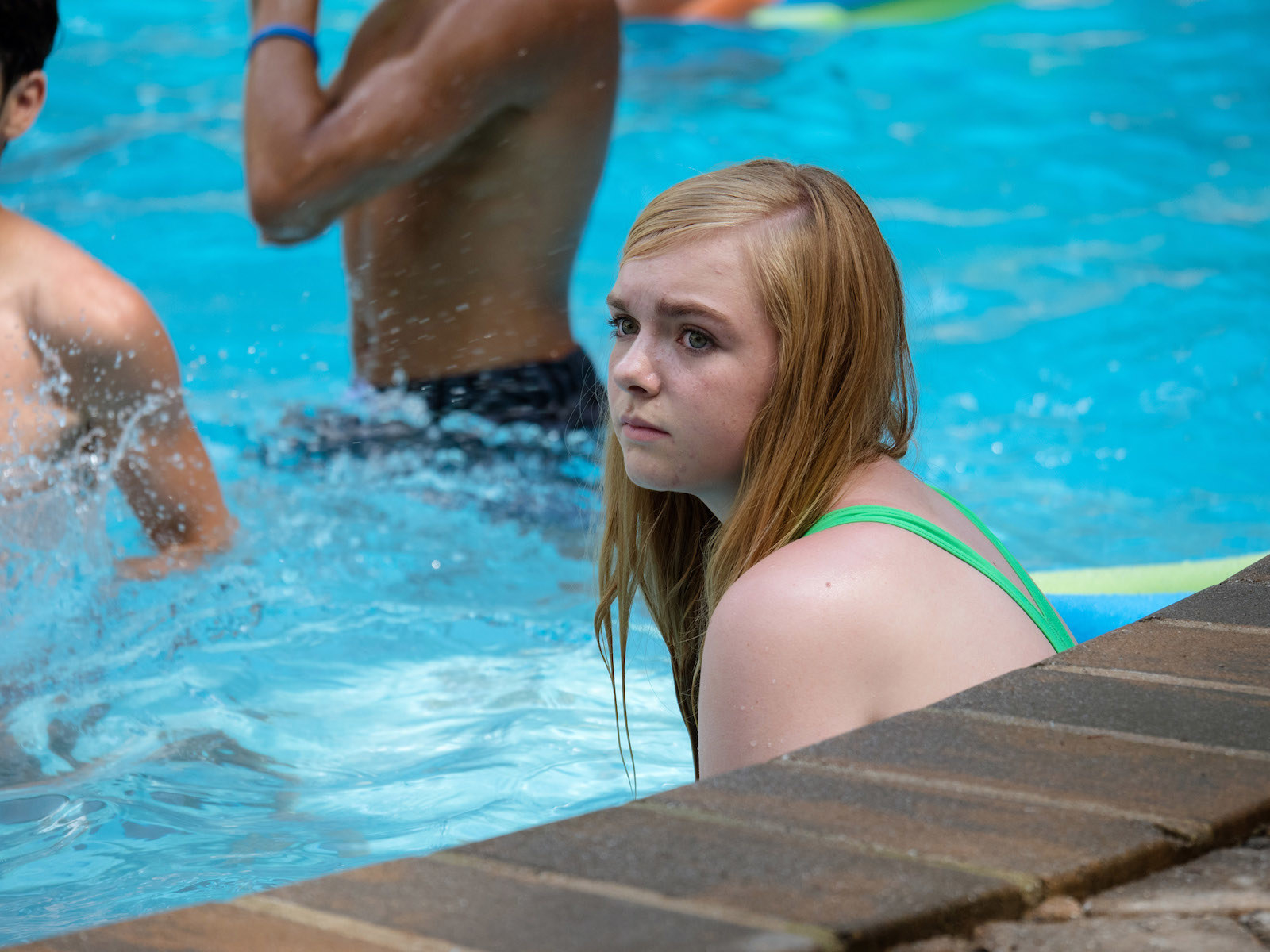
Eighth Grade (2018): The pool party
Kayla Day (Elsie Fisher) is the last person who wants to be at this pool party. She has a panic attack changing into a neon green one-piece in the bathroom, and then she stares at the weirdo kids in the pool from inside, spraying each other with water guns, chugging Gatorade, and spitting pool water between their teeth. She steps into the pool slowly, dunks her head in, and meets a boy named Gabe (Jake Ryan). He shows off his handstands and they have a breath-holding contest.
Later she leans in awkwardly for a group photo for which she looks miserably out of place. While opening birthday gifts, the popular girl Kennedy (Catherine Oliviere) unwraps Kayla’s — a “really fun” card game, Kayla insists — and side-eyes her friends, who stifle laughter.
Back inside, Kayla makes up a series of lies to get her dad to come pick her up: “I’m the last one here,” she says. “Just text me when you’re here and don’t come inside.”
Kayla’s crushing social anxiety, her lack of friends, and the hard company of middle schoolers are all abundantly clear here. Fitting in is everything, and her social worth depends on it. The pool party is bookended with Kayla narrating two vlogs: one about “putting yourself out there” and the other about being confident. On one hand, her advice is cliché — but, like any cliché, a novel revelation is tucked inside. Her trepidation isn’t arbitrary; most social situations are frantic and miserable in middle school. It’s only over years of putting yourself out there and faking confidence that you begin to remotely enjoy the idea of going to a stranger’s house to socialize. But Kayla doesn’t realize that life will be full of pool parties. Life is the pool party, and there’s no one there to help you acclimate — you have to go on your own and wade in.
—E.M.
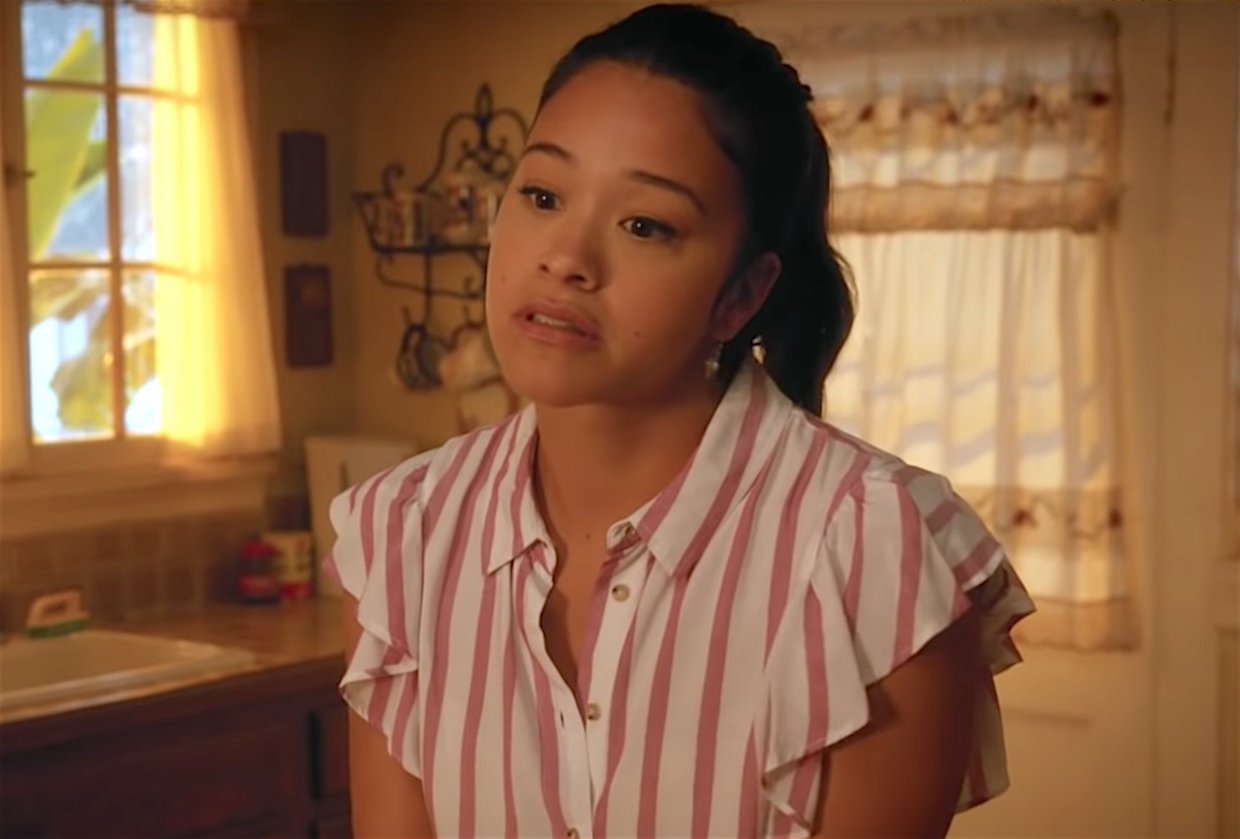
Jane the Virgin, “Chapter Eighty-Two” (2019): Jane’s monologue
In the first episode of Jane the Virgin’s final season, Jane (Gina Rodriguez) has to reconcile with the fact that her husband, the former love of her life, Michael (Brett Dier), isn’t actually dead like she thought. In classic telenovela fashion, Jane learns that Michael is alive and has amnesia, so he doesn’t remember anything about the life they shared together. Of course, this all happens when Jane is finally feeling settled and ready to take the next step with Rafael (Justin Baldoni), her new love and the father of her son.
Understandably, this is all a bit confusing and emotionally chaotic for Jane. So she tries to process the soap opera madness in one of the most powerful moments of the whole five-season series, one which was immediately heralded by fans and critics.
Rodriguez delivers a powerful seven-minute monologue that expresses Jane's wide range of emotions, from confused to upset, angry to calm. No one else in the scene says a word except for Jane. She moves about her abuela’s kitchen, pacing around the table, making a pot of tea, and at one point even lying down on the counter. The entire sequence was filmed continuously without breaks and follows Jane as she manages to work through her conflicting feelings about Michael, Rafael, and her own life.
In a decade that often felt confusing, melodramatic, and messy, Jane’s heroic effort to sort things out felt positively aspirational.
—Krystie Lee Yandoli

Fleabag, Season 2, Episode 6 (2019): The final scene
There’s almost nothing that Fleabag (Phoebe Waller-Bridge), a deceptively put-together thirtysomething in London, won’t say. Charming, caustic, and profane, she regularly breaks the fourth wall to tell us what’s really on her mind. She’s constantly thinking about her next one-night stand, the subjects of which alternately amuse and repulse her; she’s grieving the deaths of her mother and her best friend; she doesn’t know if she’s a good feminist; and she can’t decide whom she hates more: her fauxhemian godmother or her sister’s bearded jerk of a husband. But as endearing as these asides to us are, they’re often an excuse for Fleabag to avoid speaking honestly — to the people in her life and to herself.
Fortunately, that changes. Fresh off a devastating secret revealed in the first season, the second act follows an arc that’s more optimistic and even more electrifying: Our antihero tries to become a better person. Crucial to Fleabag’s growth is a handsome priest (Andrew Scott) who’s also flawed and searching for meaning, who also communicates with an offscreen presence, and who accepts Fleabag for who she is. As they fall for each other, she gradually shares more with him and less with us.
Which is why Fleabag’s last words to the priest, at a bus stop in the show’s final scene, pack such a gut punch. They’ve just spent a passionate night together, and he’s just officiated her father’s wedding with a moving speech about love. “I love you,” she tells him, laying bare her soul.
But with tears in his eyes, he admits that he’s chosen God instead. “It’ll pass,” he consoles her. But then: “I love you too.”
Showing such vulnerability, and being rejected in turn, would have mortified a younger Fleabag. But this heartbreaking exchange turns out to be the most hopeful moment of all, a note-perfect ending to a perfect show. (And yes, Waller-Bridge is right to end things here.) Opening up hasn’t broken Fleabag — just the opposite. She picks herself up and, looking into the camera with a tiny smile, shakes her head, signaling that she doesn’t need us anymore. Then she walks off into the night alone, turning to wave goodbye. At last, we know she’s going to be okay.
—Stephanie M. Lee

Parasite (2019): The twist
When we meet the Kims, they’re clinging to the bottom rung of the social ladder. Literally living below ground in a slum of South Korea, they fold pizza boxes for money but still can’t afford Wi-Fi. Then their big break comes: Son Ki-woo (Choi Woo-shik) gets asked to tutor the daughter of the wealthy Park family. One by one, through hilarious and increasingly elaborate means of deception, each Kim infiltrates the Parks’ dreamy mansion, not disclosing that they’re related, and replaces the staff. On a rainy night with their employers away, the new help kick back and celebrate that this home, this life, is practically theirs.
But just when the Kims think they’re on top of the world, an unexpected visitor, the old housekeeper (Lee Jeong-eun), drops by to retrieve something. It’s in the basement.
No, not that basement — the other one. A cabinet is pushed aside, a hidden door flung open, and down, down, down we head into a secret bunker, far from where the sun shines. In this gasp-inducing twist, the Kims learn that the housekeeper’s husband has been hiding out here from loan sharks for four years. They’re hit by the realization that there’s a class of people whose status is even lower than theirs, buried so deep they don’t exist. Nor are they content to stay there — they’ll take down everyone else in order to rise up.
Until this point, Bong Joon-ho’s Parasite is a witty satire about the have-nots robbing the haves. It’s easy to cheer for the Kims as they squeeze their 1% hosts for all they’re worth. But these new underdogs blow up everything we thought we knew, and set the stage for a blood-soaked, era-defining thriller about class warfare and all its moral complexities. It turns out that in this house, there’s more than one parasite. Everyone, the Parks included, is trapped in a system where survival requires taking more, always more, from someone else.
—S.M.L.


















